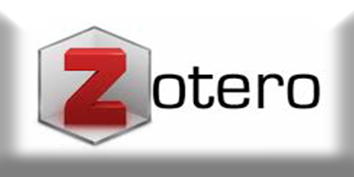Management of Reference
BAREKENG : Journal of Mathematics and Its Applications uses IEEE citation style. This style is available in most popular reference management software, such as: Mendeley, Endnote, Zotero, etc. Using the word processor plug-ins from these products, authors only need to select the appropriate journal template when preparing their article, after which citations and bibliographies will be automatically formatted in the journal's style. IEEE citation style includes in-text citations, numbered in square brackets, which refer to the full citation listed in the reference list at the end of the paper. The reference list is organized numerically, not alphabetically. It is not necessary to mention an author's name, pages used or date of publication in the in-text citation. Instead, refer to the source with a number in a square bracket, e.g. [1], that will then correspond to the full citation in your reference list.
|
Material Type
|
Works Cited
|
|
Book in print |
[1] B. Klaus and P. Horn, Robot Vision. Cambridge, MA: MIT Press, 1986. |
|
Chapter in book
|
[2] L. Stein, “Random patterns,†in Computers and You, J. S. Brake, Ed. New York: Wiley, 1994, pp. 55-70.
|
|
eBook
|
[3] L. Bass, P. Clements, and R. Kazman, Software Architecture in Practice, 2nd ed. Reading, MA: Addison Wesley, 2003. [E-book] Available: Safari e-book.
|
|
Journal article
|
[4] J. U. Duncombe, "Infrared navigation - Part I: An assessment of feasability," IEEE Trans. Electron. Devices, vol. ED-11, pp. 34-39, Jan. 1959.
|
|
eJournal (from database)
|
[5] H. K. Edwards and V. Sridhar, "Analysis of software requirements engineering exercises in a global virtual team setup," Journal of Global Information Management, vol. 13, no. 2, p. 21+, April-June 2005. [Online]. Available: Academic OneFile, http://find.galegroup.com. [Accessed May 31, 2005].
|
|
eJournal (from internet) |
[6] A. Altun, "Understanding hypertext in the context of reading on the web: Language learners' experience," Current Issues in Education, vol. 6, no. 12, July 2003. [Online]. Available: http://cie.ed.asu.edu/volume6/number12/. [Accessed Dec. 2, 2004].
|
|
Conference paper
|
[7] L. Liu and H. Miao, "A specification based approach to testing polymorphic attributes," in Formal Methods and Software Engineering: Proceedings of the 6th International Conference on Formal Engineering Methods, ICFEM 2004, Seattle, WA, USA, November 8-12, 2004, J. Davies, W. Schulte, M. Barnett, Eds. Berlin: Springer, 2004. pp. 306-19.
|
|
Conference proceedings
|
[8] T. J. van Weert and R. K. Munro, Eds., Informatics and the Digital Society: Social, ethical and cognitive issues: IFIP TC3/WG3.1&3.2 Open Conference on Social, Ethical and Cognitive Issues of Informatics and ICT, July 22-26, 2002, Dortmund, Germany. Boston: Kluwer Academic, 2003.
|
|
Newspaper article (from database)
|
[9] J. Riley, "Call for new look at skilled migrants," The Australian, p. 35, May 31, 2005. [Online]. Available: Factiva, http://global.factiva.com. [Accessed May 31, 2005].
|
|
Technical report
|
[10] J. H. Davis and J. R. Cogdell, “Calibration program for the 16-foot antenna,†Elect. Eng. Res. Lab., Univ. Texas,
Austin, Tech. Memo. NGL-006-69-3, Nov. 15, 1987. |
|
Patent
|
[11] J. P. Wilkinson, “Nonlinear resonant circuit devices,†U.S. Patent 3 624 125, July 16, 1990.
|
|
Standard
|
[12] IEEE Criteria for Class IE Electric Systems, IEEE Standard 308, 1969.
|
|
Thesis/Dissertation
|
[13] J. O. Williams, “Narrow-band analyzer,†Ph.D. dissertation, Dept. Elect. Eng., Harvard Univ., Cambridge, MA, 1993.
|
BAREKENG : Journal of Mathematics and Its Applications use reference management softwares, such as:









1.gif)



